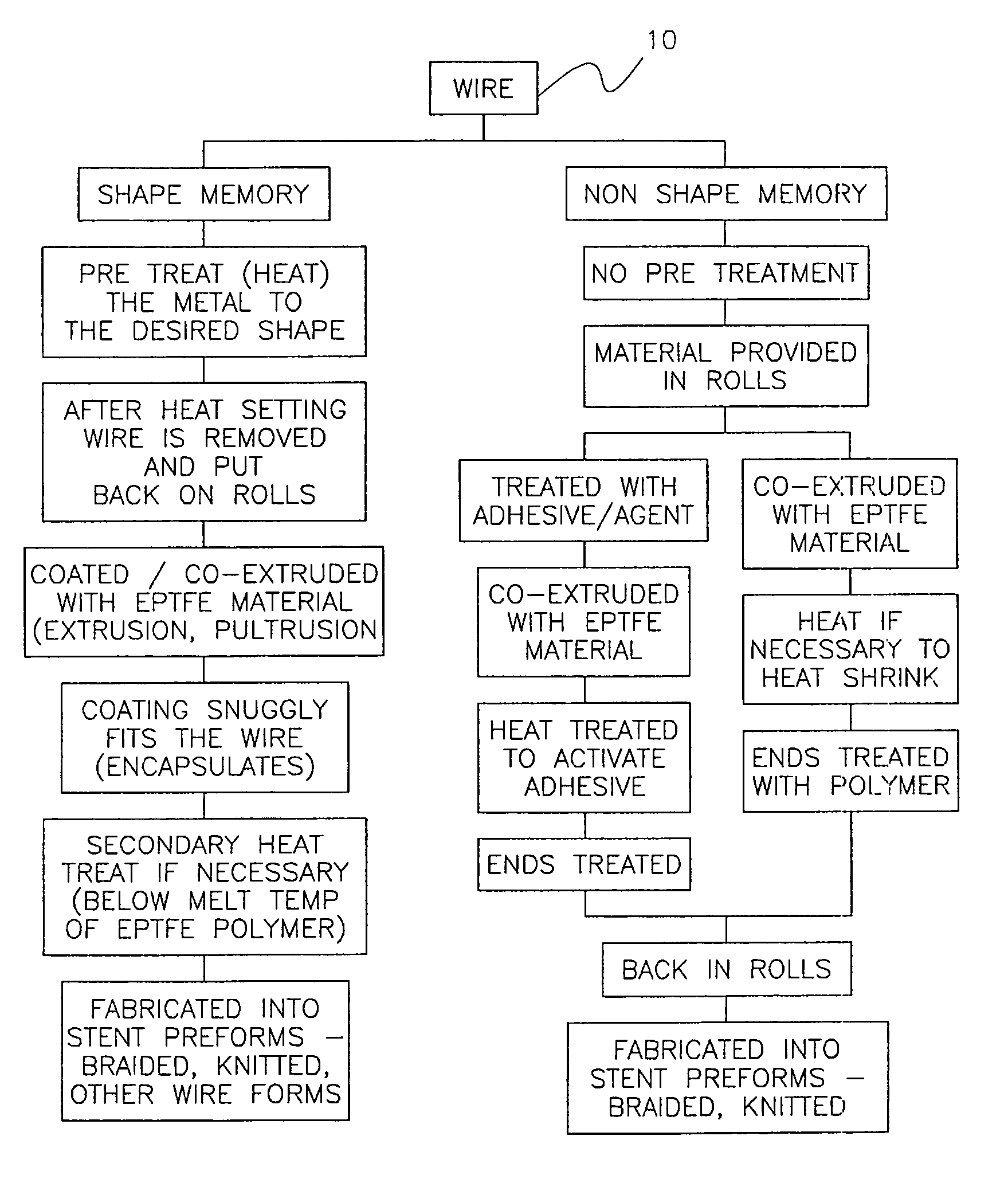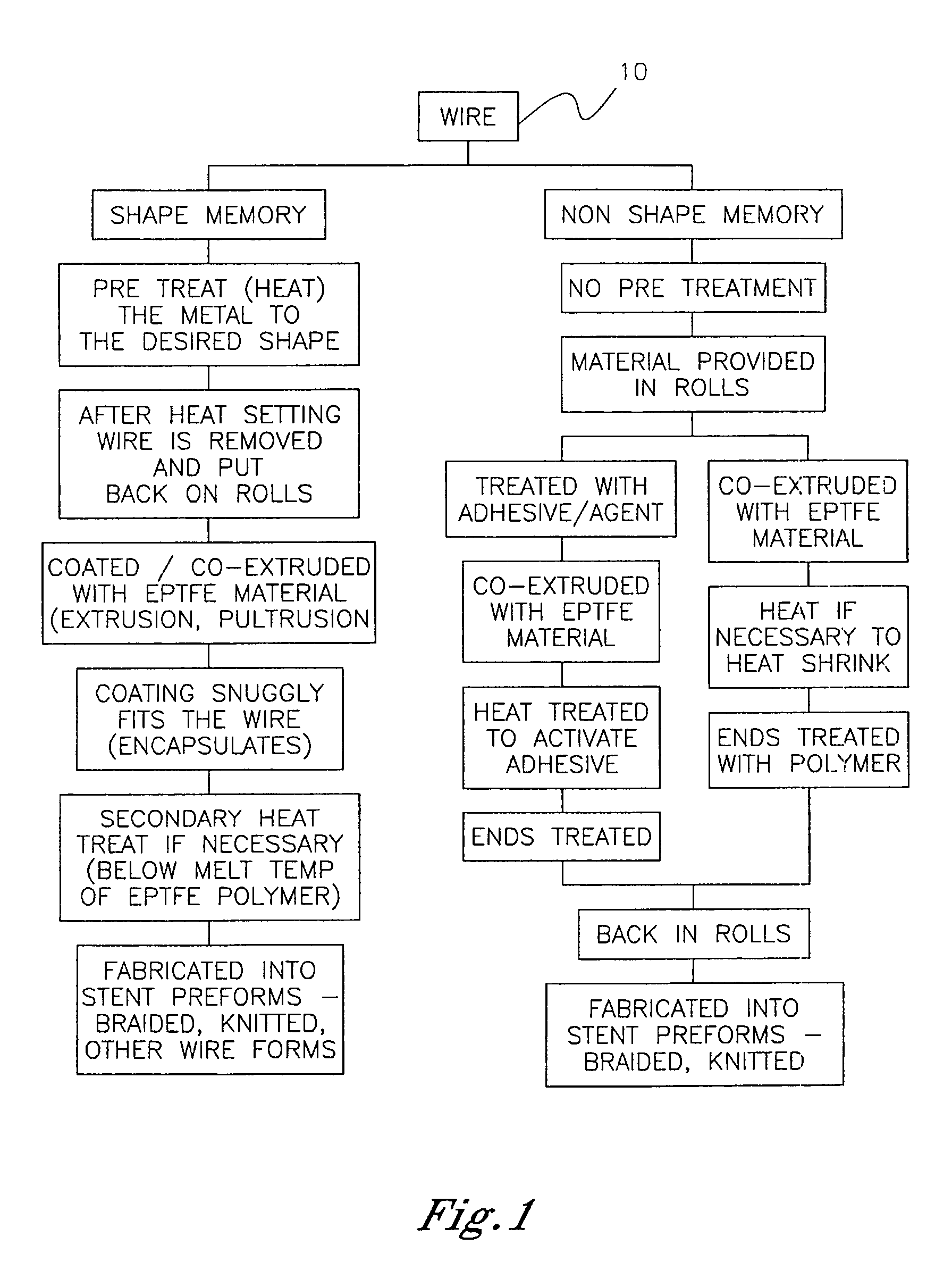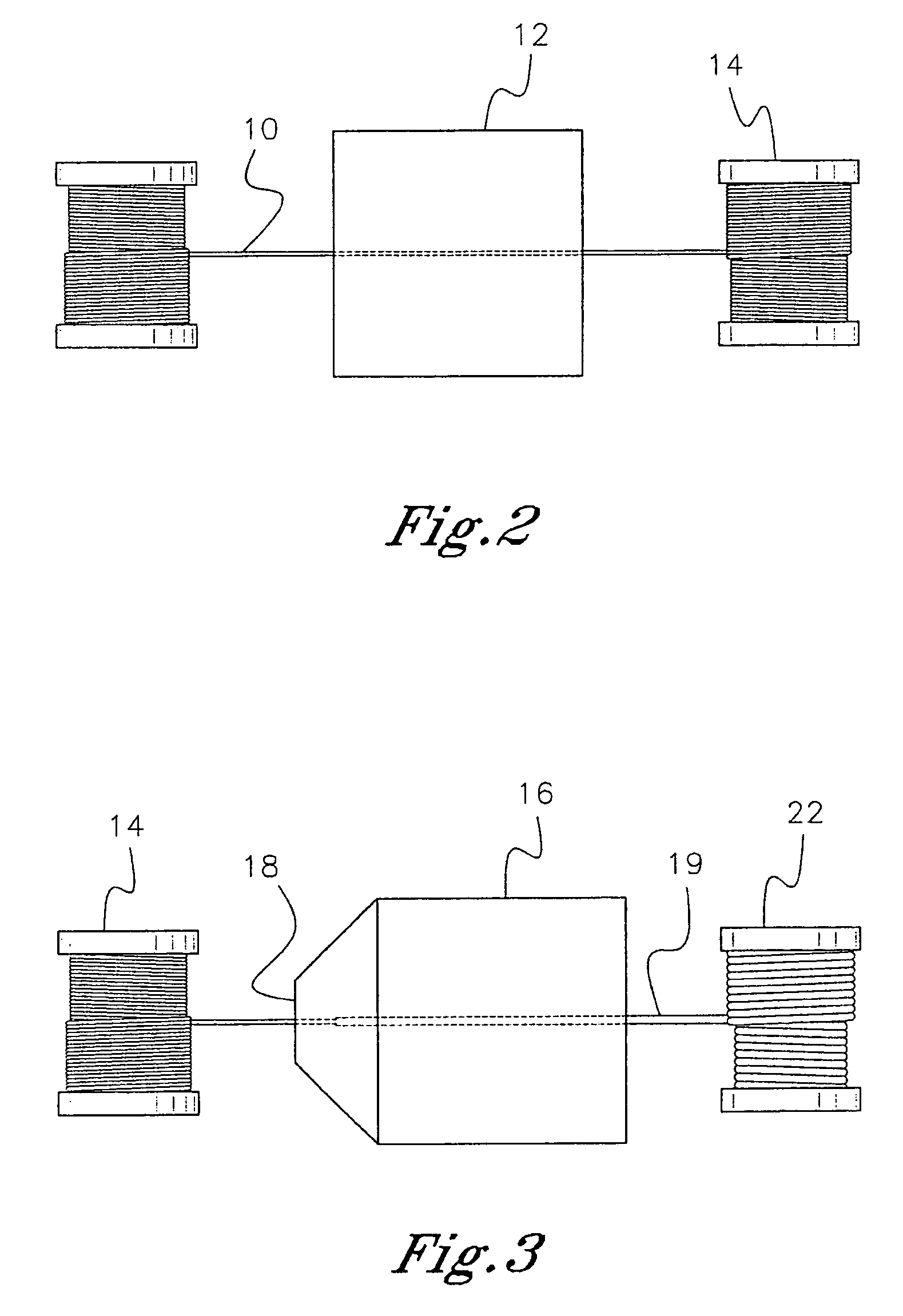Method for manufacturing a wire stent coated with a biocompatible fluoropolymer
- Summary
- Abstract
- Description
- Claims
- Application Information
AI Technical Summary
Benefits of technology
Problems solved by technology
Method used
Image
Examples
Embodiment Construction
[0016]Throughout the following detailed description, the same reference numerals refer to the same element in all figures.
[0017]Referring to FIG. 1, an expandable wire 10 suitable for use in a stent is chemically treated to remove surface oxidation and is then shaped and preheated in an oven 12 as shown in FIG. 2 to impart a desired shape to the wire. Alternatively, a plurality of wire strands are introduced in the oven simultaneously, heat set, then removed and put back on individual spools. These spools are sent to the coating step shown in FIG. 3. Alternatively, as shown in FIG. 1, the fluoropolymer can be adhesively applied to the wire 10.
[0018]Typical wire 10 for use in this invention is nickel-titanium alloy known as NITINOL™, stainless steel, titanium, tungsten, platinum, gold, silver or other like malleable metal that will retain a memory after heat treatment.
[0019]After heat treating NITINOL™ between 500–600 degrees C. for two to ten minutes, the NITINOL™ wire 10 is respool...
PUM
| Property | Measurement | Unit |
|---|---|---|
| Speed | aaaaa | aaaaa |
| Shape | aaaaa | aaaaa |
| Biocompatibility | aaaaa | aaaaa |
Abstract
Description
Claims
Application Information
 Login to View More
Login to View More - R&D
- Intellectual Property
- Life Sciences
- Materials
- Tech Scout
- Unparalleled Data Quality
- Higher Quality Content
- 60% Fewer Hallucinations
Browse by: Latest US Patents, China's latest patents, Technical Efficacy Thesaurus, Application Domain, Technology Topic, Popular Technical Reports.
© 2025 PatSnap. All rights reserved.Legal|Privacy policy|Modern Slavery Act Transparency Statement|Sitemap|About US| Contact US: help@patsnap.com



